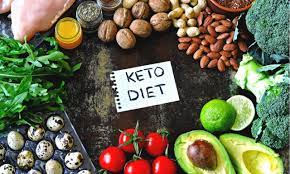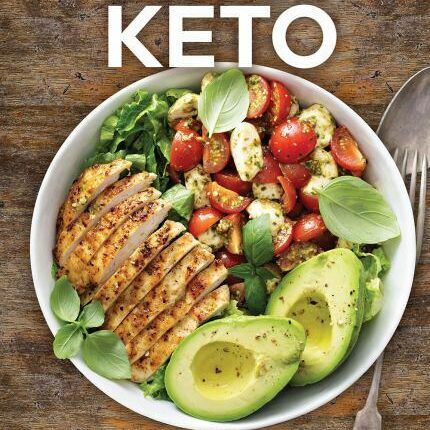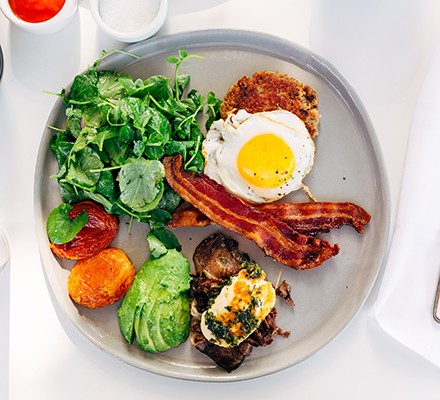The ketogenic diet, commonly known as the keto diet, has gained significant popularity over the past few years. Its promise of quick weight loss and numerous health benefits has attracted many people looking to improve their lifestyles. However, the keto diet can seem complicated at first glance. This article aims to simplify the keto diet, making it accessible and easy to understand.
What is the Keto Diet?

The ketogenic diet is a high-fat, moderate-protein, and very low-carbohydrate diet. The primary goal is to shift the body’s metabolism from relying on glucose (from carbohydrates) for energy to relying on ketones (produced from fats). This metabolic state is called ketosis.
How Does Ketosis Work?
When you consume fewer carbohydrates, your body eventually runs out of its primary energy source, glucose. In response, the liver starts converting fats into ketones, which then serve as an alternative energy source. Achieving and maintaining ketosis requires a strict reduction in carbohydrate intake, typically to less than 50 grams per day.
Benefits of the Keto Diet
- Weight Loss: By switching the body’s primary energy source to fats, the keto diet can lead to significant weight loss. Many people experience a rapid drop in weight during the initial weeks, mostly due to the loss of water weight.
- Improved Blood Sugar Control: The keto diet can help stabilize blood sugar levels and improve insulin sensitivity, which is beneficial for individuals with type 2 diabetes or those at risk of developing it.
- Enhanced Mental Clarity and Focus: Some people report improved mental clarity and cognitive function on the keto diet, possibly due to the stable supply of energy from ketones.
- Increased Energy Levels: With a consistent energy source from fats, many people experience sustained energy levels throughout the day without the typical energy crashes associated with carbohydrate-rich meals.
- Appetite Suppression: The high-fat content of the keto diet can help keep you feeling fuller for longer, reducing overall calorie intake.
Foods to Eat on the Keto Diet
To keep your body in ketosis, it’s essential to focus on high-fat, low-carb foods. Here are some staples of the keto diet:
- Meats and Seafood: Beef, pork, chicken, lamb, and fatty fish like salmon and mackerel.
- Healthy Fats: Avocado, olive oil, coconut oil, butter, and ghee.
- Low-Carb Vegetables: Leafy greens, broccoli, cauliflower, zucchini, and bell peppers.
- Dairy: Cheese, heavy cream, and unsweetened yogurt.
- Nuts and Seeds: Almonds, walnuts, chia seeds, and flaxseeds.
- Berries: In moderation, berries like strawberries, blueberries, and raspberries can be included.
Foods to Avoid on the Keto Diet
To maintain ketosis, it’s crucial to avoid high-carb foods, including:
- Sugary Foods: Candy, soda, fruit juices, and desserts.
- Grains and Starches: Bread, pasta, rice, and cereals.
- High-Carb Fruits: Bananas, apples, oranges, and grapes.
- Legumes: Beans, lentils, and chickpeas.
- Root Vegetables: Potatoes, carrots, and sweet potatoes.
Tips for Starting the Keto Diet
- Plan Your Meals: Planning your meals and snacks can help you stay on track and avoid high-carb temptations.
- Stay Hydrated: Drinking plenty of water is essential, as the keto diet can have a diuretic effect.
- Electrolyte Balance: Ensure you’re getting enough sodium, potassium, and magnesium to prevent the “keto flu,” a set of symptoms some people experience when starting the diet.
- Monitor Your Macros: Keeping track of your macronutrient intake (fats, proteins, and carbs) can help ensure you stay within the necessary ratios to maintain ketosis.
- Be Patient: Your body may take a few days to a week to adapt to the keto diet. During this period, you may experience fatigue or irritability, but these symptoms usually subside as your body adjusts.
Common Myths and Misconceptions
- The Keto Diet is High in Unhealthy Fats: While the keto diet is high in fats, it encourages the consumption of healthy fats from sources like avocados, nuts, and olive oil, rather than unhealthy trans fats.
- You Can Eat Unlimited Protein: The keto diet requires moderate protein intake. Consuming too much protein can convert to glucose and potentially kick you out of ketosis.
- It’s All About Bacon and Butter: While these can be included, the keto diet is diverse and includes plenty of vegetables, healthy fats, and protein sources.
Long-Term Considerations
The keto diet can be sustainable long-term, but it’s essential to listen to your body and adjust as needed. Some people choose to follow a cyclical keto diet, which includes periods of higher carb intake. Others may transition to a low-carb, high-fat diet that’s less restrictive but still maintains some of the benefits of ketosis.
Conclusion
The keto diet can be an effective and sustainable way to lose weight and improve overall health when done correctly. By focusing on high-quality fats, moderate protein, and low-carb foods, you can enjoy the benefits of ketosis. Remember to plan your meals, stay hydrated, and be patient with your body as it adjusts to this new way of eating. Whether you’re looking to lose weight, stabilize blood sugar levels, or enhance mental clarity, the keto diet can be a powerful tool in your health and wellness journey.

